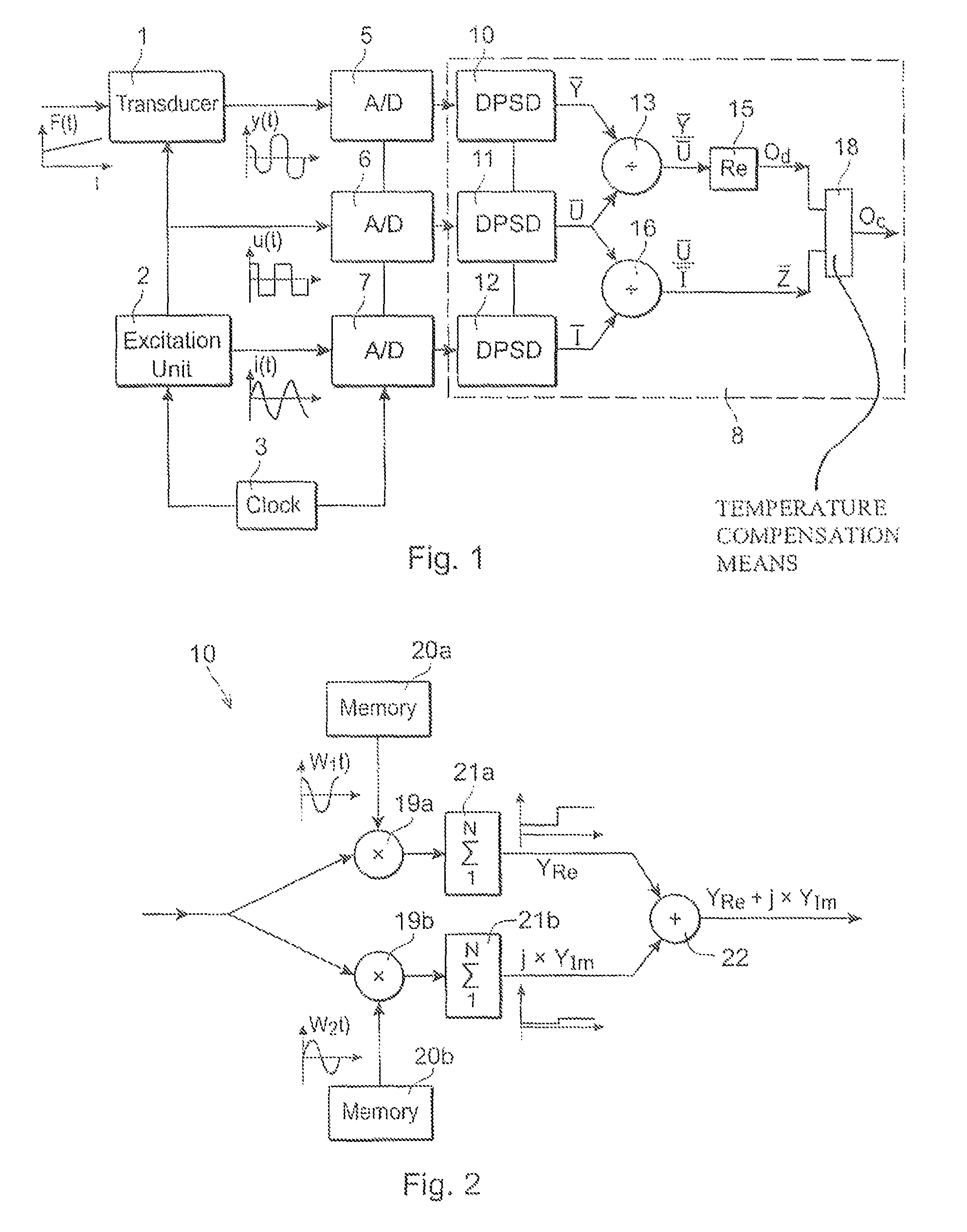Method and device for demodulation of signals
a signal and demodulation technology, applied in the field of signal demodulation, can solve the problems of low frequency noise in the rectified output, difficult to detect, and high cost, and achieve the effect of improving the demodulation of the output signal
- Summary
- Abstract
- Description
- Claims
- Application Information
AI Technical Summary
Benefits of technology
Problems solved by technology
Method used
Image
Examples
Embodiment Construction
[0042]FIG. 1 illustrates a device for demodulation of an output signal y(t) from a transducer 1 driven by an excitation signal, in the form of a periodic excitation voltage u(t), from an excitation unit 2. For example, the transducer is a magnetoelastic transducer measuring changes in applied force. A time-dependent force F(t) is applied to the transducer 1, which is excited by the excitation voltage u(t) from the excitation unit 2. In FIG. 1 the excitation voltage is depicted as a square wave u(t). The transducer 1 modifies the excitation voltage in dependence on the magnitude of the force F(t), and produces a transducer output signal y(t). The excitation current i(t) is measured by the excitation unit 2. A clock 3 determines the excitation frequency of the excitation unit 2.
[0043]The device comprises a first sampling unit 5 adapted to sample the output signal y(t) from the transducer 1, a second sampling unit 6 adapted to sample the excitation voltage u(t) of the excitation unit, ...
PUM
 Login to View More
Login to View More Abstract
Description
Claims
Application Information
 Login to View More
Login to View More - R&D
- Intellectual Property
- Life Sciences
- Materials
- Tech Scout
- Unparalleled Data Quality
- Higher Quality Content
- 60% Fewer Hallucinations
Browse by: Latest US Patents, China's latest patents, Technical Efficacy Thesaurus, Application Domain, Technology Topic, Popular Technical Reports.
© 2025 PatSnap. All rights reserved.Legal|Privacy policy|Modern Slavery Act Transparency Statement|Sitemap|About US| Contact US: help@patsnap.com



